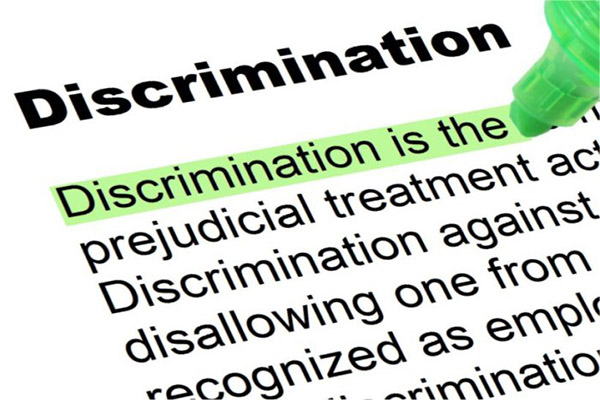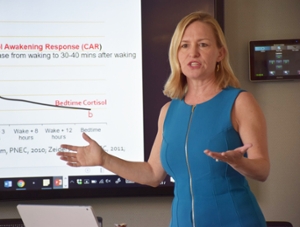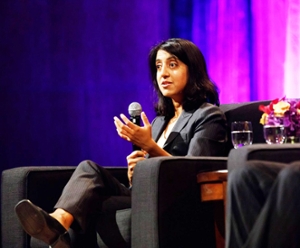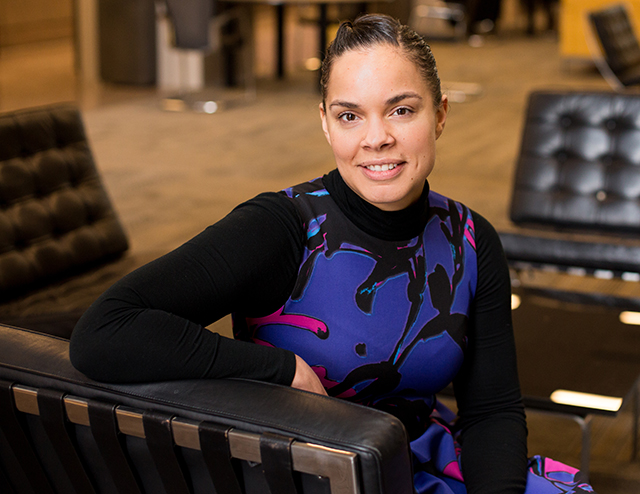Examining Discrimination to Understand Its Impact
IPR researchers provide multidisciplinary insights to help address issues
Get all our news

The #MeToo, Black Lives Matter, and LGBTQIA movements, among others, have raised awareness about the stubborn persistence of various kinds of discrimination that people from all walks of life, racial and ethnic backgrounds, genders, and sexual orientations face every day. Discrimination not only works its way into daily interactions between people and even into their health, but also infiltrates the very institutions that a well-functioning society depends upon—schools and courts, companies and governments.
"IPR researchers are doing path-breaking work across a wide range of topics related to discrimination,” IPR Director Diane Whitmore Schanzenbach said. “Together, we will work to understand and address the most complicated and pressing social issues."
In examining discrimination at micro- and macro-levels from the vantage points of different disciplines, IPR faculty experts are documenting the problems but always with an eye toward understanding how policies can bring about change. Below are examples of IPR research that examine various aspects of discrimination and its impact. More can be found at IPR’s website.
HEALTH | SCHOOLS AND TRAINING | THE WORKPLACE | GENDER | COURTS AND POLICING

Racial discrimination can affect the body’s stress hormones. According to work by IPR psychobiologist Emma Adam, people who experience higher levels of discrimination tend to have lower overall levels of the stress hormone cortisol and flatter cortisol diurnal rhythms, which can cause cardiovascular disease and cognitive problems. There is hopeful news, however: In ongoing work, Adam finds that having a strong ethnic and racial identity is associated with better-regulated stress biology and higher levels of academic attainment.
Could racial discrimination also be associated with chronic diseases and shorter lives? Using longitudinal data, IPR health psychologists Greg Miller and Edith Chen and their University of Georgia colleagues examined whether racial discrimination predicts higher levels of low-grade inflammation, which can lead to chronic diseases of aging such as coronary disease and strokes. Among the 160 African American who were 17 years old at the start of the study, those exposed to more perceived racial discrimination showed higher levels of inflammation three years later. However, in others, positive racial identities seemed to provide a protective effect, curbing the higher levels of inflammation. The researchers also find that the same type of exposure to discrimination is linked to increased cellular aging, which can lead to a shorter lifespan. Again, youth with supportive family environments did not experience this type of aging.
Self-perceived discrimination, racism, chronic stress, and other social influences can affect racial health disparities in cardiovascular disease. IPR biological anthropologist Christopher Kuzawa notes that all of these factors, when experienced by a woman during pregnancy, can have adverse effects on the health of her offspring that persist into late life. He and fellow researchers, including Adam and IPR biological anthropologist Thomas McDade, are tracing the biophysical consequences of discrimination and racism from birth into adulthood, and even across generations.
DISCRIMINATION IN SCHOOLS AND TRAINING
Principals treat parents differently based on race. Through field observation and interviews with white, African American, and Hispanic principals, IPR education sociologist Simone Ispa-Landa has discovered differences in how principals tried to manage parents who did not meet their expectations. For example, only African American and Hispanic principals sought one-on-one contact with parents they found challenging, while white principals reported routinely using the police to manage black and Hispanic parents.
School districts should explore “soft” affirmative action policies and other hiring reforms to help diversify the teaching profession. In an IPR working paper, IPR Director Diane Whitmore Schanzenbach and former IPR graduate research assistant Cynthia (CC) DuBois examine a 1969 court-ordered hiring mandate in Louisiana’s Tangipahoa Parish, which was finally enforced in 2010. They discover that the policy increased the share of African American teachers and decreased the student-teacher representation gap.
The vast majority of educators want and need gender diversity training. IPR graduate research assistant Mollie McQuillan surveyed educators after they went through a program on gender inclusivity, discovering that they found the training useful and provided practical suggestions for their school. After the training, educators also felt equipped to create a safe school environment for transgender students and students who do not fit the typical male or female definitions.
Racial disparities in quality of care sometimes stem from physician attitudes. Psychologist and IPR associate Sylvia Perry identifies one possible cause of biased attitudes and proposes possible solutions. Perry and her colleagues discover that students whose instructors made negative racial comments or jokes were significantly more willing to express racial bias themselves. The finding underscores the importance of informal, experiential elements of medical training in shaping the attitudes of future medical providers, the researchers explain.
Stereotypes and discrimination shape students’ friendships and identity development across their formal educational experiences. Research by IPR psychologist Onnie Rogers and her colleagues show how high schoolers use racial and gender stereotypes to make decisions about whom they befriend. The researchers investigate how cultural stereotypes can throw up barriers to forming positive relationships with their peers from different racial-ethnic groups and how this can hinder positive youth development. IPR psychologist Mesmin Destin and his co-authors also explore how socioeconomic status (SES) can play a role in how people understand their identity and how discrimination prevents lower-income and racial-ethnic minority college students who are upwardly mobile from feeling like they fully belong in their new communities.
DISCRIMINATION IN THE WORKPLACE

Rates of hiring discrimination against African Americans have not changed between 1990 and 2015. In a meta-analysis of 24 studies, IPR sociologist Lincoln Quillian and his colleagues find that whites received on average 36 percent more callbacks to interview than African Americans with equal job qualifications and 24 percent more callbacks than Latinos. According to Quillian, the results, published in the Proceedings of the National Academy of Sciences, support the need for efforts to enforce anti-discrimination laws and suggest a continued need for compensatory policies like affirmative action in hiring.
The "American Dream" might be little more than a pipe dream for children born to less-privileged circumstances. Through interviewing and observing hiring professionals at elite investment banks, consulting firms, and law firms, management and organizations professor and IPR associate Lauren Rivera found that these firms overwhelmingly favor white, upper-class applicants during the hiring process. “[T]hese employers end up systematically excluding smart, driven, and socially skilled students from less-privileged socioeconomic backgrounds from the highest-paying entry-level jobs in the United States,” she wrote.
People who encounter discrimination at work have a very difficult time improving their situation and may even worsen it by going to court. As sociologist and IPR associate Robert Nelson, with Ellen Berrey of the University of Toronto and Laura Beth Nielsen of Northwestern, show in a new book, Rights on Trial: How Workplace Discrimination Law Perpetuates Inequality (University of Chicago, 2017), litigation has large personal and financial costs that make plaintiffs feel they have lost, no matter the court outcome. The legal system’s decisions rarely change employment conditions and might leave employers believing, falsely, that their workplaces are free of discrimination.

Gender discrimination is clearly still a problem, but what can we do about it? IPR economist Seema Jayachandran evaluates an intervention in India aiming to eliminate biased attitudes. Preliminary results show that the program, in which staff of a human rights nongovernmental organization facilitated classroom discussions about gender equality, successfully changes attitudes. The researchers plan to survey the participants once they become adults to examine if the program increased women’s educational attainment and decreased sex-selective abortions.
The use of employee referrals disadvantages women. Up to 50 percent of jobs are attained through informal channels, including employee referrals. In an experiment in Malawi, IPR development economist Lori Beaman finds when both male and female candidates were allowed to choose people of either gender for a referral, only 30 percent of those chosen were women. This is driven by male candidates, with 77 percent of men referring other men when given the choice.
Though grounded in our observations, gender stereotypes are powerful sources of prejudice and discrimination. For example, the stereotype that women are warm and communal reflects observations that women, far more than men, serve not only as primary caretakers of their own children, but also as community caretakers, working as elementary teachers or nurses. Prejudices arise when women occupy roles that require more “male” qualities—for example, competitiveness, assertion, and dominance. As IPR psychologist Alice Eagly’s research shows, women then have to overcome doubts about their qualifications. Discrimination is a common outcome.
DISCRIMINATION IN COURTS AND POLICING

Racial and ethnic minorities are more likely to be stopped by police. According to an IPR working paper on the Chicago Police Department by IPR policing expert Wesley G. Skogan, only 11 percent of older, white females came into contact with police, but 68 percent of young African-American males reported a police encounter. Meanwhile, only 17 percent of white respondents experienced police use of force, compared with more than 30 percent for other racial/ethnic groups.
We need more evidence about the sources of racial disparities in the use of proactive policing strategies, according to a report by the National Academies of Sciences, Engineering, and Medicine. IPR economist Charles F. Manski contributed to the comprehensive 327-page report on proactive policing. It concludes that there are likely to be large racial disparities in the number and nature of police encounters with citizens when police target high-risk places and people—a common characteristic of proactive policing. Given the history of racial injustice in the United States—particularly in criminal justice and policing—the report makes it clear that more research is necessary to determine what the causes of these disparities are. The ultimate goal is for police departments to align their behaviors with values of equity and justice.
Photos: Jason Smith and Northwestern
Published: February 27, 2018.